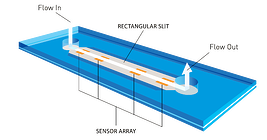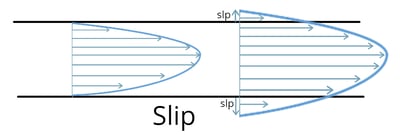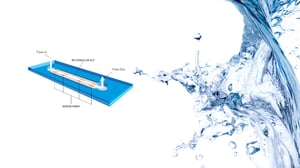The VROC® (Viscometer-Rheometer-on-a-Chip) technology powering all RheoSense viscometers is a combination of MEMS and microfluidic based technologies. With the small sample size capabilities and direct control of shear rates, we have a wide variety of customers using our viscometers for multiple applications. Because the core technology is the same, the capabilities within each product may vary based on the design of the instrument but the accuracy is the same and can be compared across all products. With that being said, here are some common questions asked regarding our VROC chips!
What are the dimensions of a VROC chip?
Internal dimensions:
W = 2.1 [mm] (typically)
h = 50[um] = 0.05[mm]
l = 12mm **The channel width and length are different for each chip
**The channel width and length are different for each chip
What is the diameter of the inlet and outlet tubing of the chips?
The outlet tubing diameter for all chips is 0.055” or 1.2-1.3mm in diameter now (we used to have different sizes before, but unified them this year). For microVISC™ chips, inlet is part of sensor cartridge front that has a 0.028” (0.7mm) hole. m-VROC® chips inlet tubing depends on what type of chips.
0.25 mm is for A and B-type; 0.5mm is for C-type and 1.0mm for E-type. But B10, B20 and B30 use 0.5mm tubing.
How many microliters can fill up the flow channel at a time?
RheoSense VROC® chips come in various flow channel depths, 50 microns, 100, 200, and 300 (we can also customize). In a 50 micron flow channel depth chip, about 1.2 microliters can fill up the whole flow channel. For a 100 micron flow channel depth, it will be about 2.4 microliters and so on.

What is the wetted materials?
RheoSense VROC® chips contain of PEEK, Kalrez, Si, Platinum, PFA, and Borosilicate Glass. These components are comprised of the ‘wetted materials’ which refers to where the samples will go through and what components the samples will interact with in the chip.
With VROC technology, have you observed behavior of wall slip or shear band effects?
Wall slip and/or band effects, contrary to many papers, are often viewed with a particular application at a particular rate. It is not something that happens to all samples at any parameter or any shear rate. A good example of when you will see this is with polymer melts at a particular shear rate. In that case, it may be a good thing to review and know your shear limitations based on your applications.

Want to learn more about our VROC technology? Or do you need help determining what chip is best for your applications? Contact us today to speak with one of our rheology experts about what chip will provide the best results for your team!
Written by: Grace Baek, RheoSense Operations Manager


